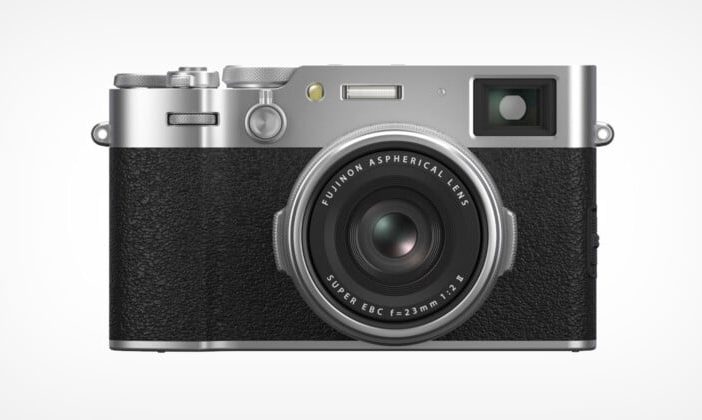
After announcing its arrival, Fujifilm today announced the X100VI at its X-Summit in Tokyo, Japan. The new version, pronounced “X100 six”, retains the familiar compact form factor but upgrades the sensor to 40 megapixels and adds 5-axis in-body image stabilization.
With the X00VI, Fujifilm focused on maintaining the same rangefinder-style experience while upgrading a few important features rather than going for an overall major upgrade that the system saw in the X100V.

The X100VI uses the same improved 23mm f/2 mark II lens, which is equivalent to 35mm on full-frame sensors. The EVF is also unchanged and retains the same 3.69 million points as the X100V. As before, the camera uses a hybrid optical and electronic viewfinder that can be activated according to the photographer’s preferences. The “Electronic Range Finder” (ERF) function allows a small EVF to be displayed simultaneously on the OVF. With this feature, the photographer can view either the entire frame or the critical focus area, thereby increasing the capabilities of a standard optical viewfinder.

The back of the X100VI has the same 1.62 million-dot LCD panel, but it now hinges 15 degrees downward to make it easier to use at high angles.
The camera is not entirely weatherproof, but this can be achieved by adding the optional AR-X100 adapter ring and PRF-49 protective filters to the lens.
An improved sensor and IBIS
The The camera offers 20 film simulations, including Reala Ace, the ability to capture 10-bit HEIF files, and can shoot at up to 20 frames per second with the electronic shutter and up to 11 frames per second with the mechanical shutter (up to 1/ 180,000 seconds shooting with the electronic shutter also).

The sensor offers a native base ISO of 125, which improves on the previous generation camera which could only reach this mark via an expanded sensitivity option. The sensor also supports tracking autofocus and can use subject detection AF, based on deep learning AI, to detect animals, birds, cars, motorcycles, bikes, planes, trains, insects, drones and, of course, people.
If the 35mm focal length isn’t enough, Fujifilm has also included 1.4x and 2.0x digital teleconverters to step up to the 50mm and 70mm equivalents, respectively.

The Improved shooting speed in stills and video, the X100VI still uses the same UHS-1 SD memory card slot. This also meant that there wasn’t enough bandwidth to support internal ProRes recording.

As mentioned, the X100VI adds in-body image stabilization (IBIS), which is a first for the X100 series. The 5-axis system provides up to six stops of stabilization without significantly increasing the size or weight of the camera body compared to the previous version: it weighs only 1.52 ounces (43 grams) more than the previous model and is only two millimeters thicker. (1.5 mm at the front and 0.5 mm at the rear).
The as they are created. Frame.io support on the X100VI joins the X-H2, H-H2S, and GFX100 II in offering this functionality across the Fujifilm lineup. As mentioned, the X100VI can use Frame.io without any accessories, while the X-H2 and X-H2S both require an optional file transmitter handle, adding size and weight to the kit.

The Fujifilm X100VI will be available in silver or black and is expected to be available in early March 2024, but it will cost slightly more than the
A special edition is also coming
To celebrate Fujifilm’s 90th anniversary in 2024, a special limited edition of the X100VI camera will be offered by Fujifilm, limited to 1,934 units worldwide. The camera is engraved with the Fujifilm logo from 1934 (the year it was founded) and each has a unique serial number. They will be packaged in a soft release box including a special wristband and historic Fujifilm cards.



The Limited Edition X100VI will only be available directly from Fujifilm in late March 2024 and will cost $1,999.99.
Image credits: Fujifilm
News Source : petapixel.com
Gn tech




